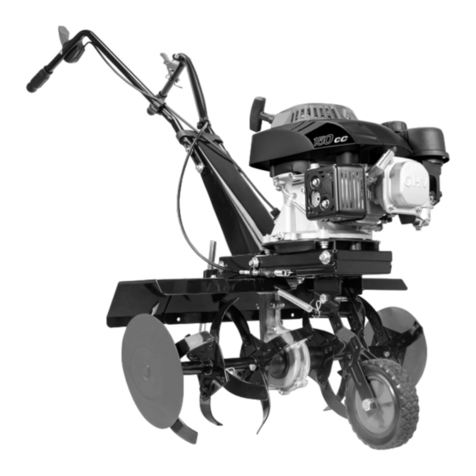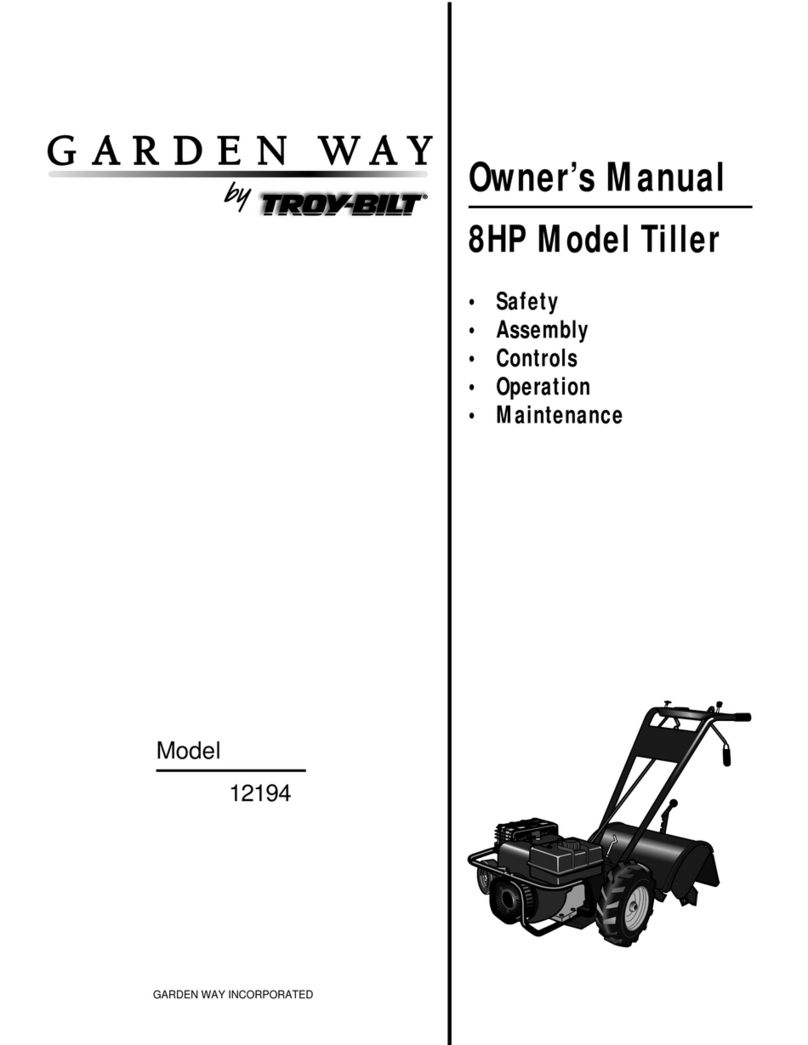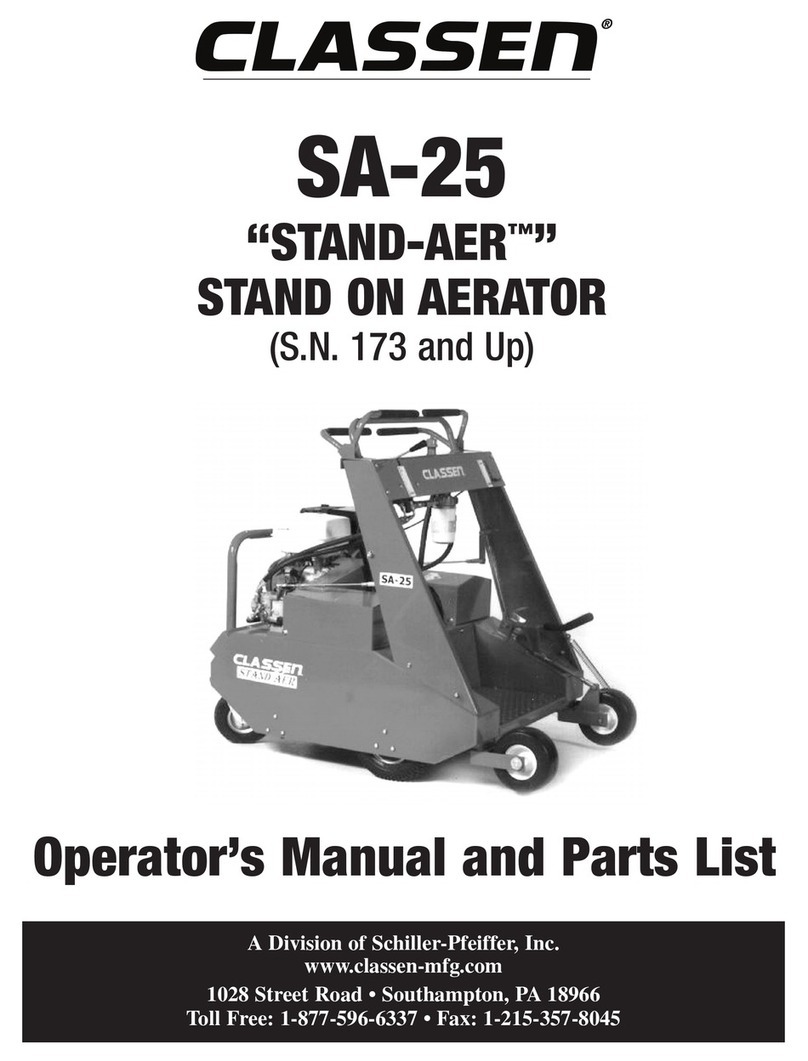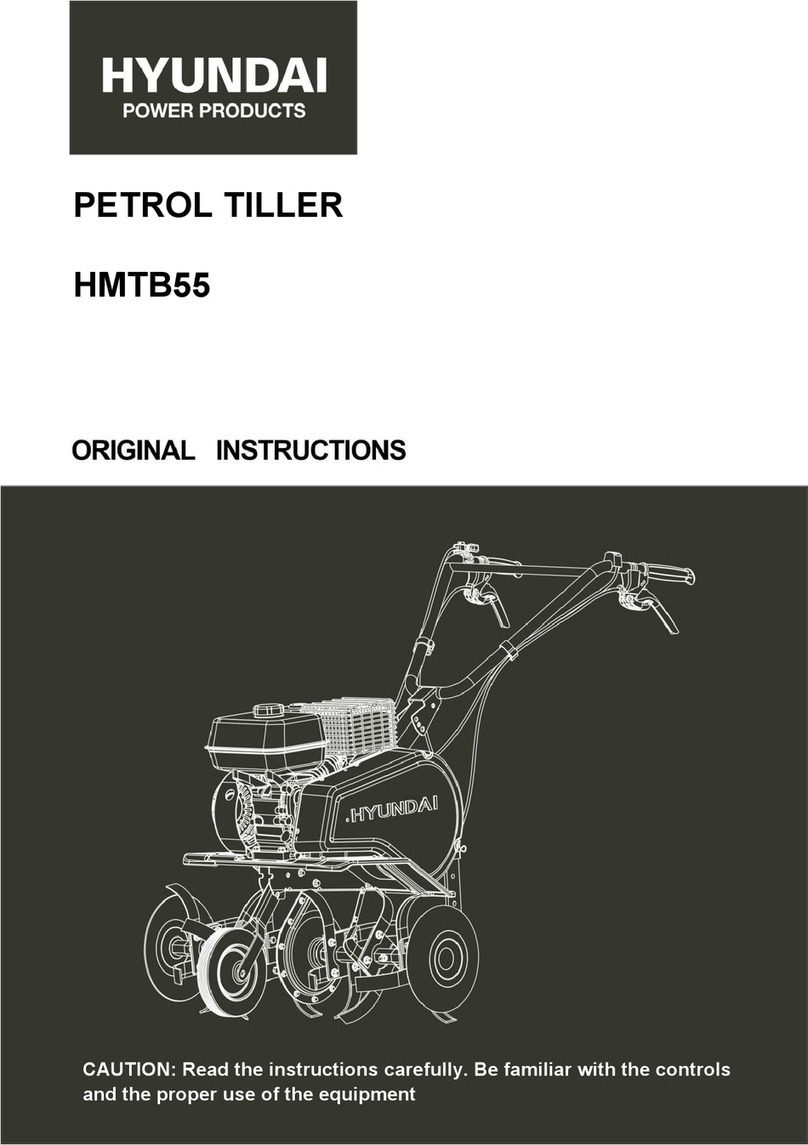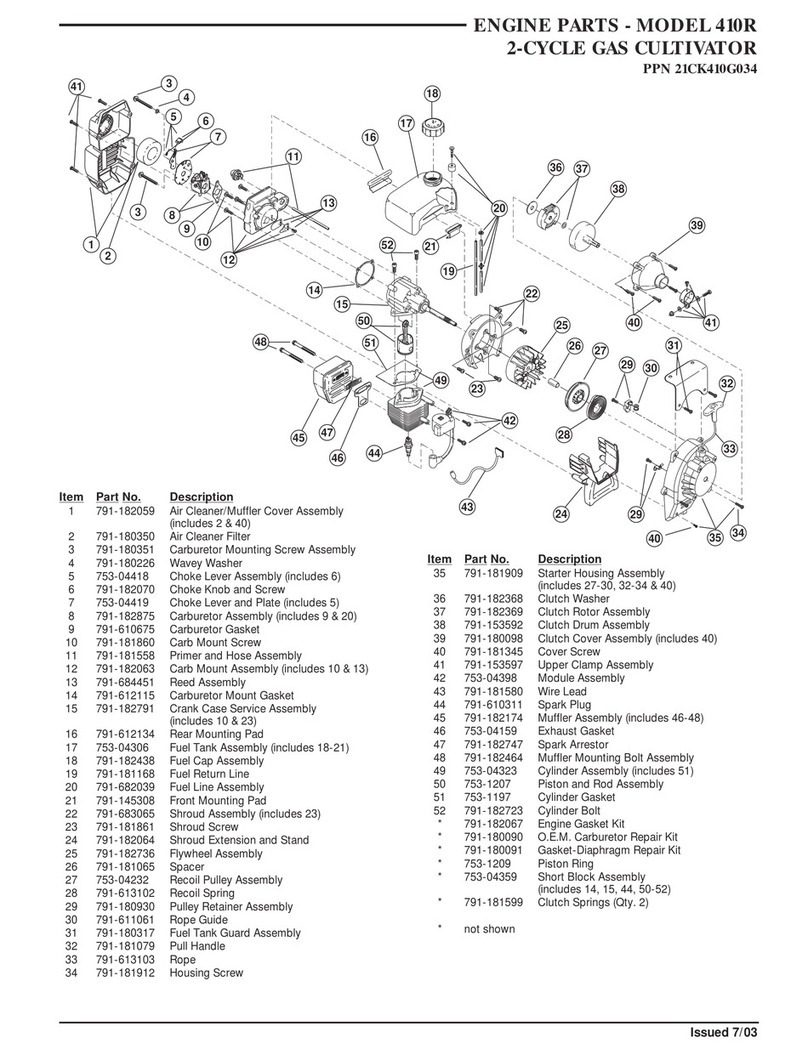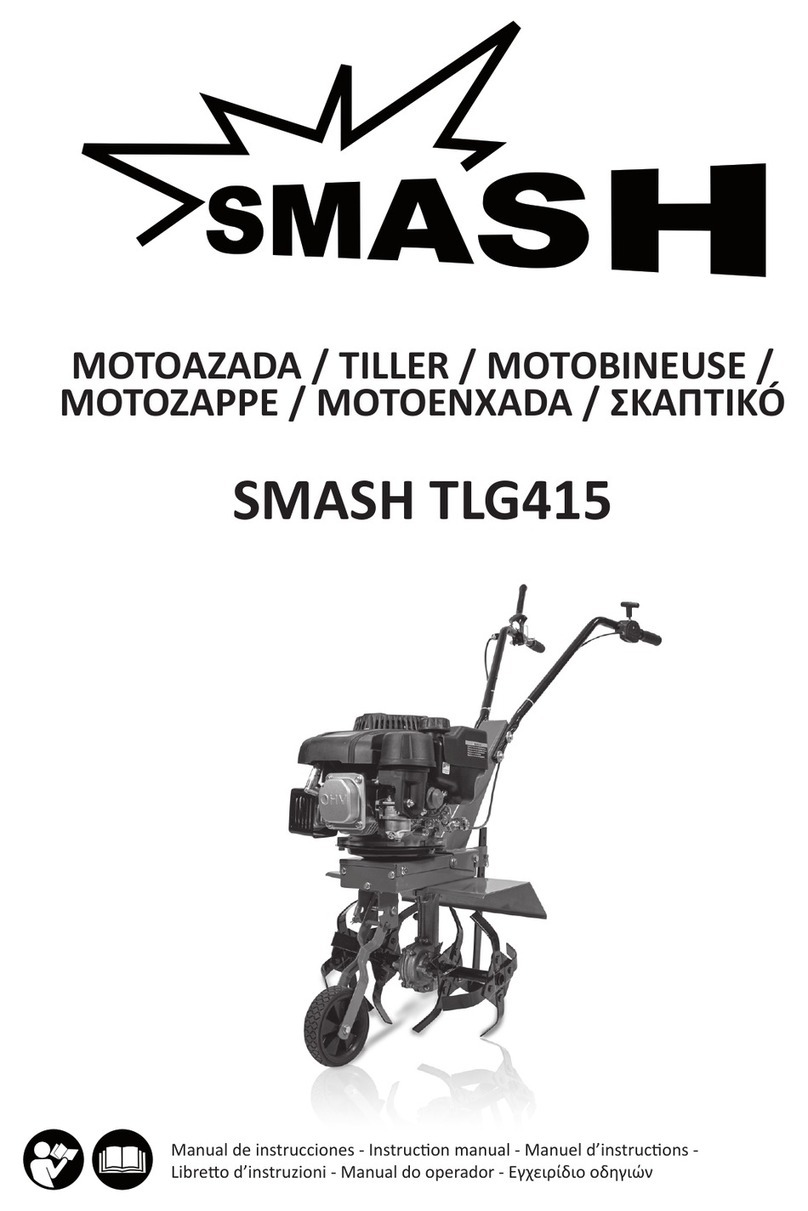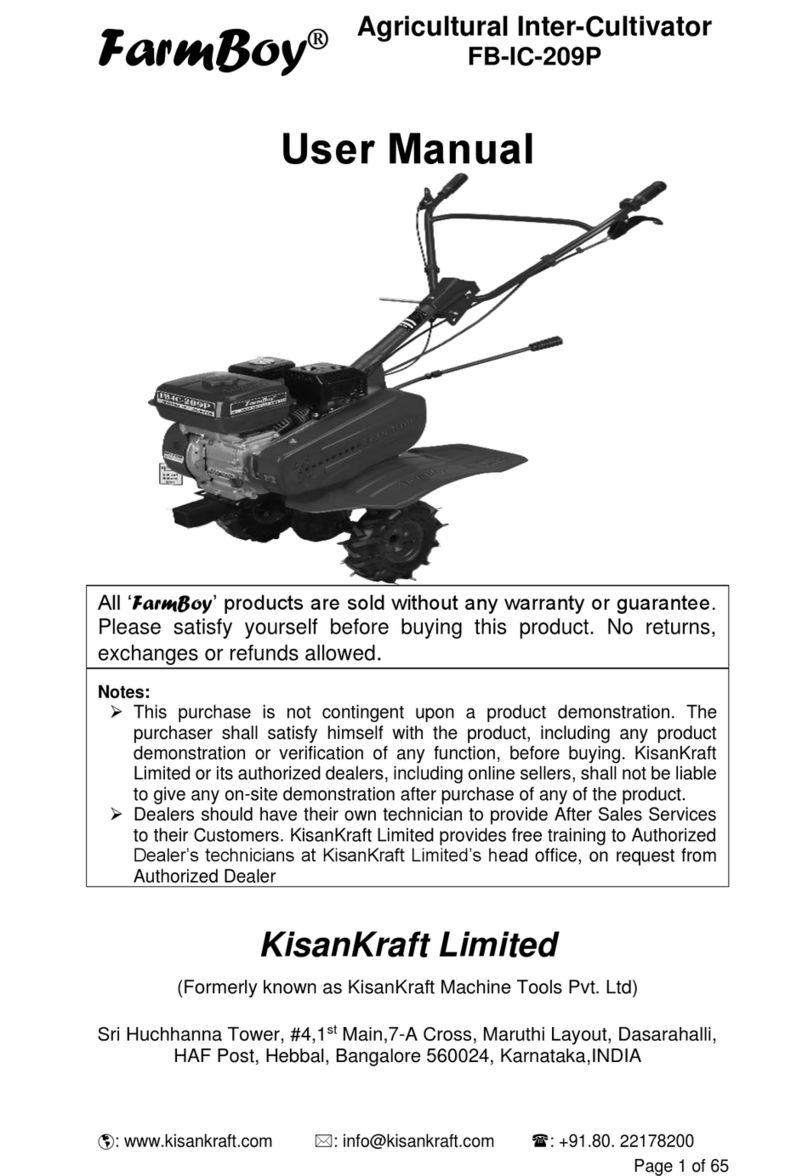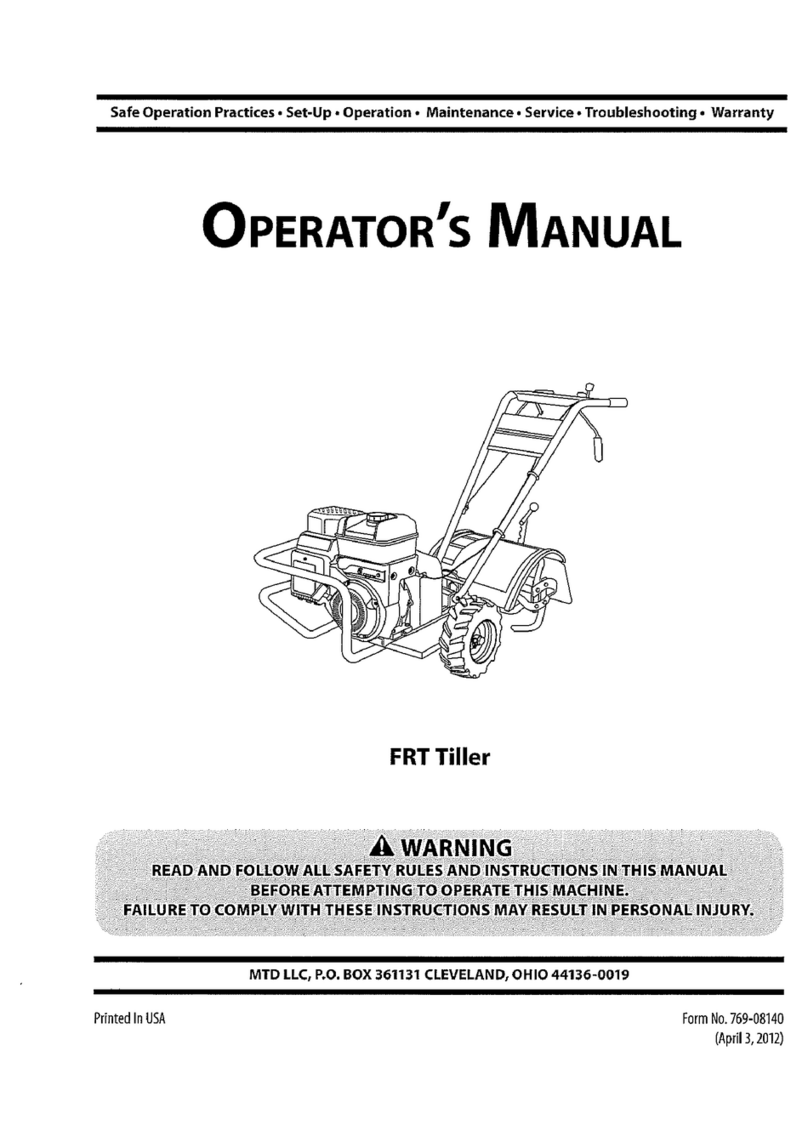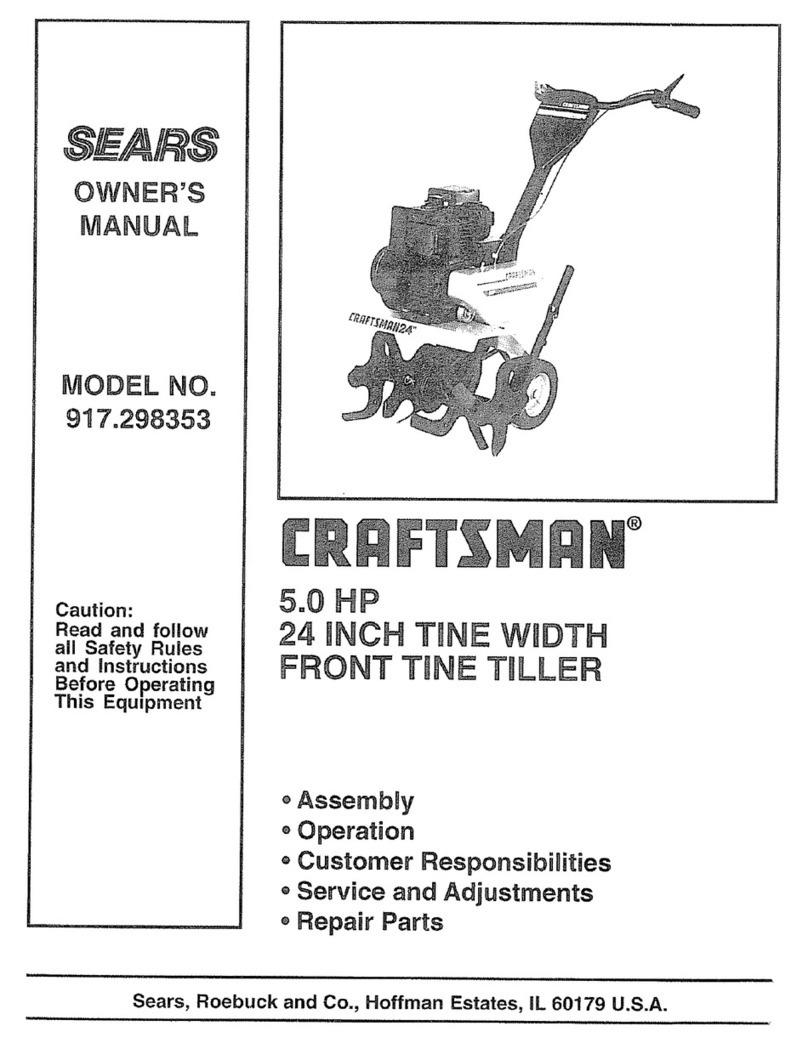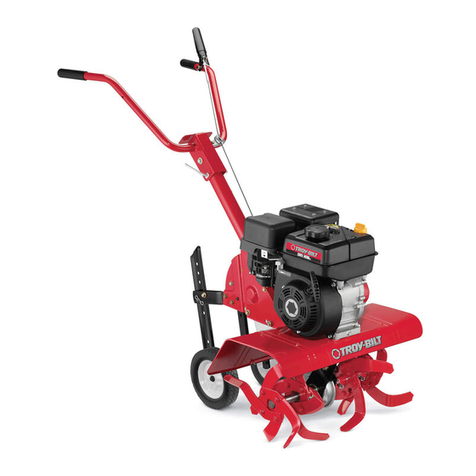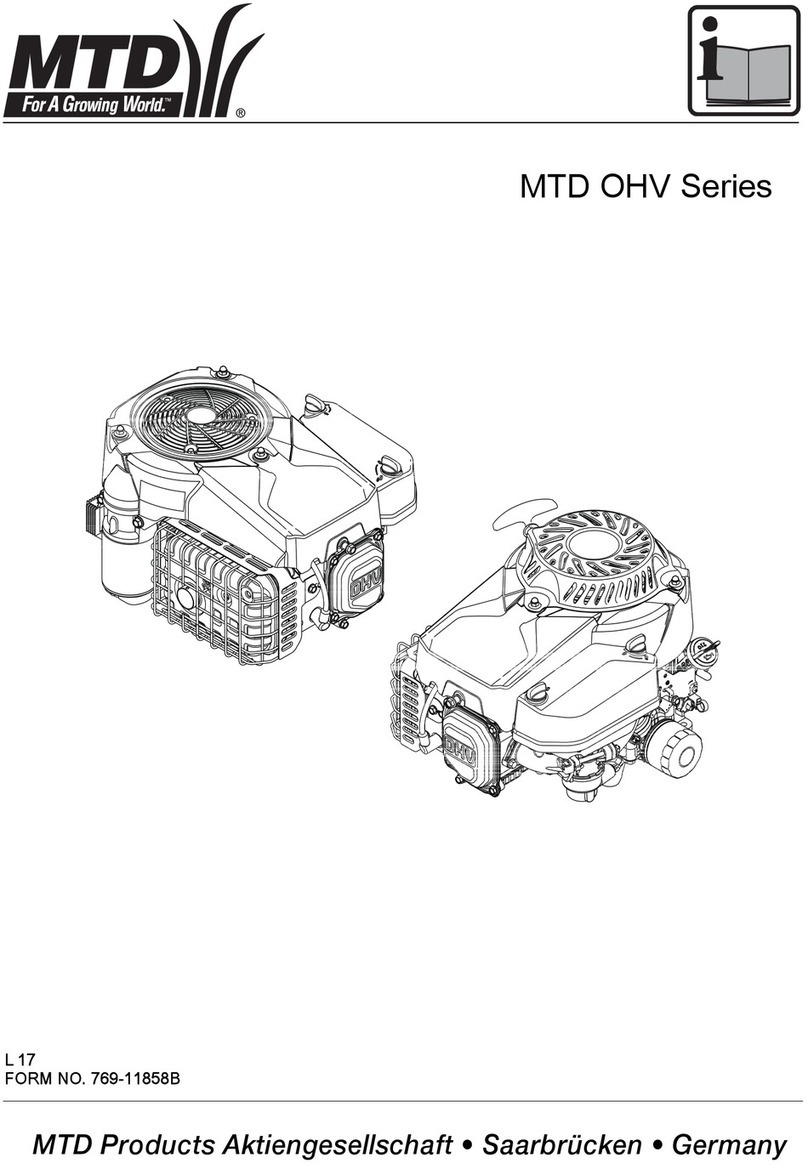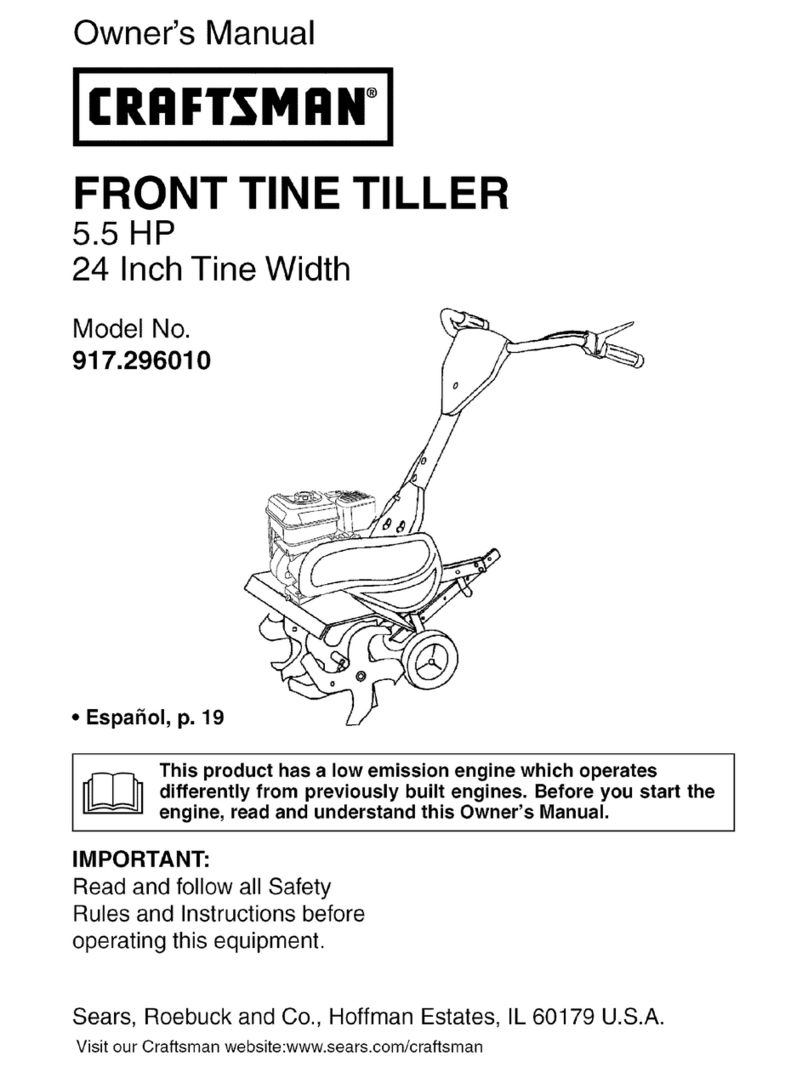
ORIGINAL INSTRUCTIONS
5
c) Always be sure of your footing on slopes;
d) Walk, never run with the machine;
e) For wheeled rotary machines, work across the slopes, never
up and down;
f) Exercise extreme caution when changing direction on
slopes;
g) Do not work on excessively steep slopes;
h) Use extreme caution when reversing or pulling the machine
towards you;
i) Do not change the engine governor settings or over speed
the engine;
j) Start the engine carefully according to manufacturer
instructions and with feet well away from the tool(s);
k) Do not put your hands or feet near or under rotating parts;
l) Never pick up or carry a machine while the engine is running;
m) Stop the engine:
Whenever you leave the machine;
Before refueling;
n) Reduce the throttle setting during engine shut down and, if
the engine is provided with a shut-off valve, turn the fuel off at
the conclusion of working;
4) Maintenance and storage
a) Keep all nuts, bolts and screws tight to ensure the
equipment is in safe working condition;
b) Never store the equipment with petrol in the tank inside a
building where fumes can reach an open flame or spark;
c) Allow the engine to cool before storing in any enclosure;
d) To reduce the fire hazard, keep the engine, silencer and
petrol storage area free of vegetative material and excessive
grease;
e) Replace worn or damaged parts for safety;
f) If the fuel tank has to be drained, this shall be done outdoors.
